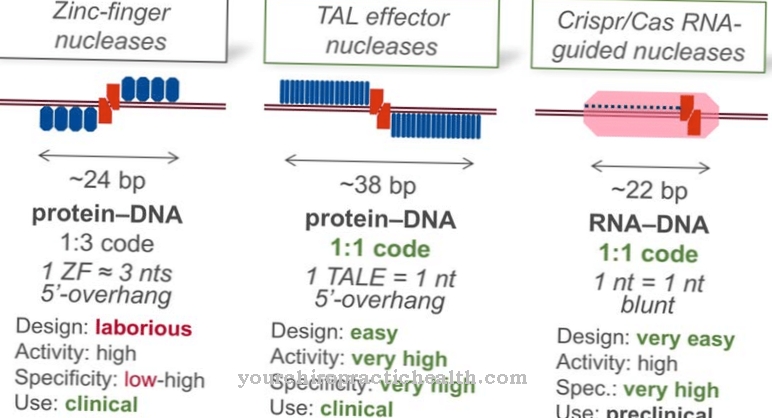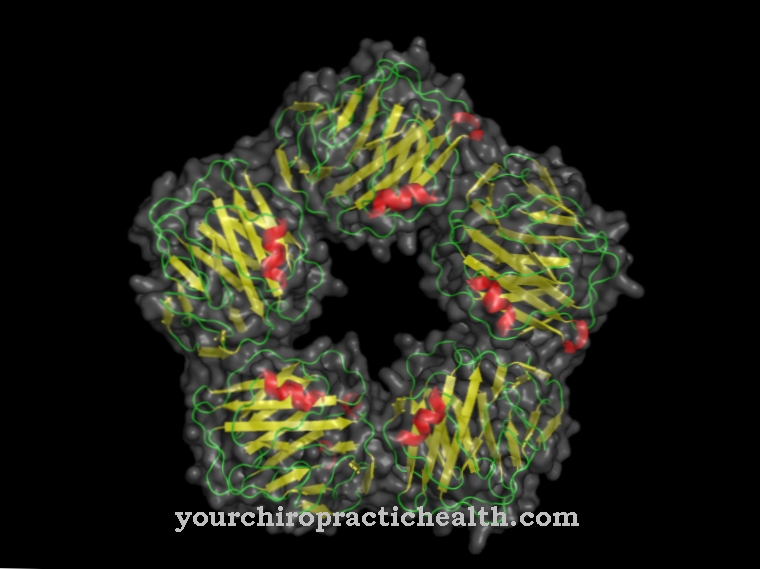Lipoproteins are plasma proteins that are used to transport fats. Six different classes of these complexes have been identified so far. Lipid metabolism disorders are a common disease in the western world that increases the risk of heart attacks and strokes.
What are lipoproteins?
Lipoproteins are a complex of lipids and proteins found in blood plasma. This means that lipoproteins are among the plasma proteins. There are different classes of lipoproteins. A total of six different classes are distinguished. The classification is based on the physical density. For example, HDL lipoproteins have a high density. LDL lipoproteins, on the other hand, are of rather low density.
These different densities of the individual complexes result mainly from the ratio in which proteins and lipids are contained in the respective complex. In addition to HDL and LDL, VLDL, IDL, so-called chylomicrons and lipoprotein a belong to the lipoproteins. The HDL can be divided into further subclasses and is also called alpha lipoprotein.
Anatomy & structure
Lipoproteins are particles of lipids and proteins. These are non-covalent aggregates or also proteins that correspond to a conjugated form of proteins. In terms of their properties, they resemble micelles that aggregate in a medium such as water. All lipoproteins have a non-polar core. This core consists of cholesterol esters and triglycerides. Compounds between various fatty acids and cholesterol are called cholesterol esters.
The shell of the lipoproteins is oriented towards the aqueous phase and consists of phospholipids, protein and some hydroxyl groups from unesterified cholesterol. The shell is hydrophilic. The core of the lipoproteins, on the other hand, is hydrophobic. Their density ranges up to 1.21 mg / l. Like the density, the proportions of cholesteryl ester, triglycerides and cholesterol differ with the subclasses.
Function & tasks
The subclasses of lipoproteins fulfill various functions in the body and are mainly used to transport water-insoluble lipids or fats, cholesteryl esters and cholesterol through the blood system. In order to transport the substances, lipoproteins bind with the contained apoproteins to receptor proteins of cells. The intestinal tract absorbs triglycerides and cholesterol. The substances migrate into the lymphatic system via chylomicrons and enter the veins through the thoracic duct.
When the fatty acids are released, lipases act on the chylomicrons. This leaves chylomicron remnants in the muscle and fat cells, which migrate back to the liver and are broken down there. VLDL particles and their metabolites LDL and IDL are used to transport the body's own synthesized cholesterol. You can also remove triglycerides from the chylomicrons. Together with the synthesized cholesterol, they transport the taken over triglycerides into the tissue. In contrast, HDL particles are used to remove cholesterol from the tissue. With the enzyme LCAT they take up cholesterol esterified with fatty acids and deliver it back to the liver. The subgroup of chylomicrons forms in the intestinal wall.
They only transport triglycerides out of the intestinal wall. They use the bloodstream to transport the substances to the liver cells. The transport to the fat and muscle cells also takes place via the bloodstream. VLDL is also produced in the cells of the liver. The lipoproteins transport triglycerides from the liver, where they are stored and re-synthesized. IDL are degradation products of the VLDL that do not have an independent task. As a rule, they cannot be detected in the blood plasma.
LDL particles come from the liver cells and carry cholesterol esters and cholesterol around the body. This group can be divided into two subgroups. In addition to dense and small LDL particles, there are large LDL particles that float. HDL particles also come from the liver cells. In contrast, lipoprotein a is a component of blood lipids.
You can find your medication here
➔ Medicines for muscle weaknessDiseases
Fat metabolism disorders are common diseases. A lipid metabolism disorder manifests itself primarily in a shift in the composition of the blood lipid values. All lipid metabolism disorders actually mean a disturbed metabolism of lipoproteins. Hypercholesterolemia is one of the most well-known disorders of lipid metabolism. This increases the cholesterol in the plasma. This is to be distinguished from hypertriglyceridemia, in which only the triglycerides are increased. Both phenomena belong to the hyperlipidemia. The opposite is hypolipidemia, in which there are deficiency symptoms in the plasma. On the other hand, decreased HDL indicates hypolipoptroteinemia.
In dyslipoproteinemia, there is too much LDL while there is too little HDL in the plasma. Hyperlipoproteinemia, on the other hand, is when only elevated LDL is present. Hyperlipidemias are particularly common in the western world. If the LDL concentration is increased, there is also talk of an excess of bad cholesterol. HDL, on the other hand, is called good cholesterol and should therefore not be lowered. Because of the eating habits of the western world, western society tends to have low HDL, while the LDL is often decreased. This phenomenon is usually associated with insulin resistance.
Diabetes thus develops as part of a metabolic syndrome. More than half of western adults suffer from abnormal cholesterol levels, which are usually due to both diet and lifestyle. Poor blood lipid levels can promote atherosclerosis and strokes, but also heart attacks and coronal heart diseases. Obesity and alcoholism are just as much risk factors as thyroid and liver dysfunction or the use of certain medications.



























